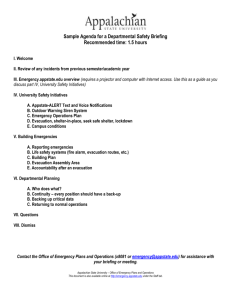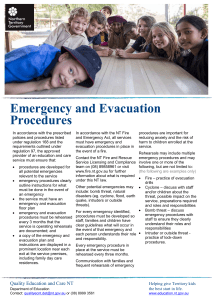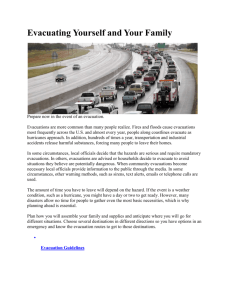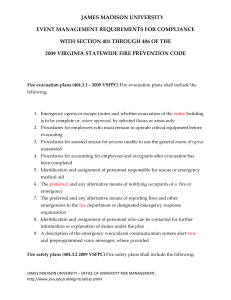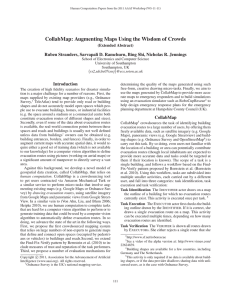Emergency Procedures Checklist
advertisement
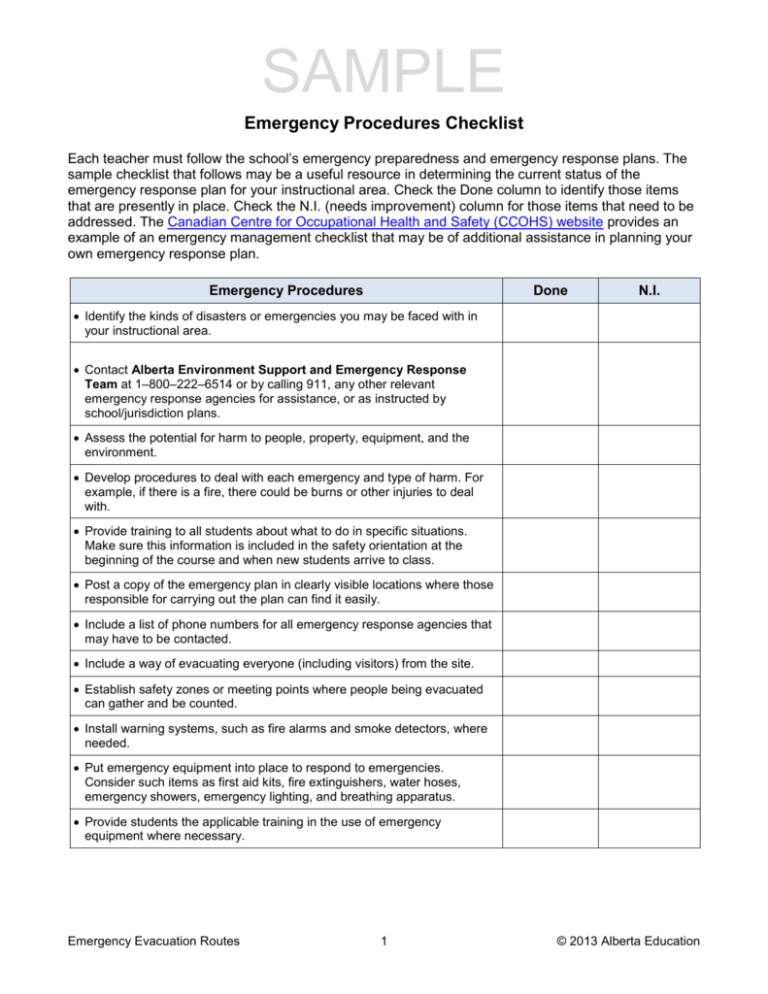
SAMPLE Emergency Procedures Checklist Each teacher must follow the school’s emergency preparedness and emergency response plans. The sample checklist that follows may be a useful resource in determining the current status of the emergency response plan for your instructional area. Check the Done column to identify those items that are presently in place. Check the N.I. (needs improvement) column for those items that need to be addressed. The Canadian Centre for Occupational Health and Safety (CCOHS) website provides an example of an emergency management checklist that may be of additional assistance in planning your own emergency response plan. Emergency Procedures Done N.I. Identify the kinds of disasters or emergencies you may be faced with in your instructional area. Contact Alberta Environment Support and Emergency Response Team at 1–800–222–6514 or by calling 911, any other relevant emergency response agencies for assistance, or as instructed by school/jurisdiction plans. Assess the potential for harm to people, property, equipment, and the environment. Develop procedures to deal with each emergency and type of harm. For example, if there is a fire, there could be burns or other injuries to deal with. Provide training to all students about what to do in specific situations. Make sure this information is included in the safety orientation at the beginning of the course and when new students arrive to class. Post a copy of the emergency plan in clearly visible locations where those responsible for carrying out the plan can find it easily. Include a list of phone numbers for all emergency response agencies that may have to be contacted. Include a way of evacuating everyone (including visitors) from the site. Establish safety zones or meeting points where people being evacuated can gather and be counted. Install warning systems, such as fire alarms and smoke detectors, where needed. Put emergency equipment into place to respond to emergencies. Consider such items as first aid kits, fire extinguishers, water hoses, emergency showers, emergency lighting, and breathing apparatus. Provide students the applicable training in the use of emergency equipment where necessary. Emergency Evacuation Routes 1 © 2013 Alberta Education SAMPLE Assign specific emergency duties to students who have been specially trained, if appropriate. Make sure everyone knows what duties they have been given and who to call on for assistance. Review the plan with school administration and the jurisdiction’s safety emergency response department. It is critical to let them know if an emergency arises. Hold emergency drills with students to practise roles and procedures to be followed. For example, the school routinely holds fire drill practices and most students have practised how to respond in the event of a bomb threat. Check and inspect all emergency equipment on a regular schedule, including first aid equipment and supplies and any rescue equipment that is relevant to your instructional area. NOTE: Refer to your school’s policy and procedures to ensure that all the procedures you develop are in compliance. Emergency Evacuation Routes 2 © 2013 Alberta Education SAMPLE EMERGENCY EVACUATION ROUTES ________________________________________________ Rm# ______ CTS Instructional Area ____________________________________________________________ Instructor It is important to know the emergency evacuation routes out of this instructional area and out of the school should an emergency occur. Emergency Exits: Evacuation Route: Location of Fire Extinguisher: Location of Master Power Control: Fire Alarm Location: Emergency Evacuation Routes 3 © 2013 Alberta Education SAMPLE Meeting Point After Evacuation: Other: Emergency Evacuation Routes 4 © 2013 Alberta Education





